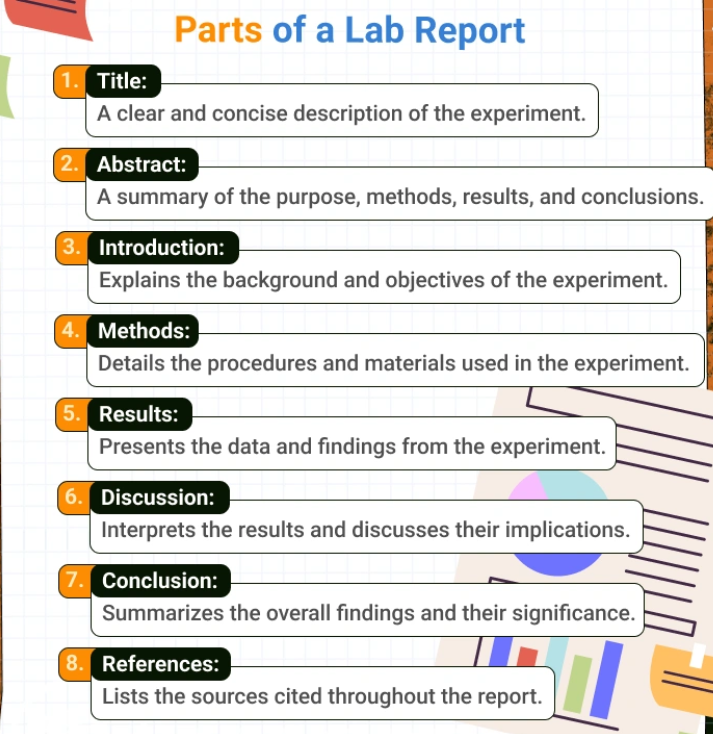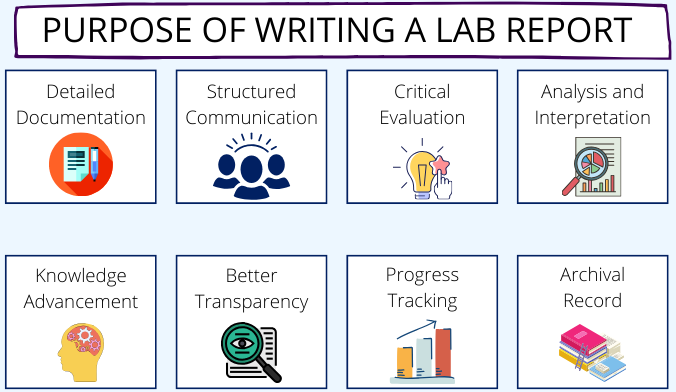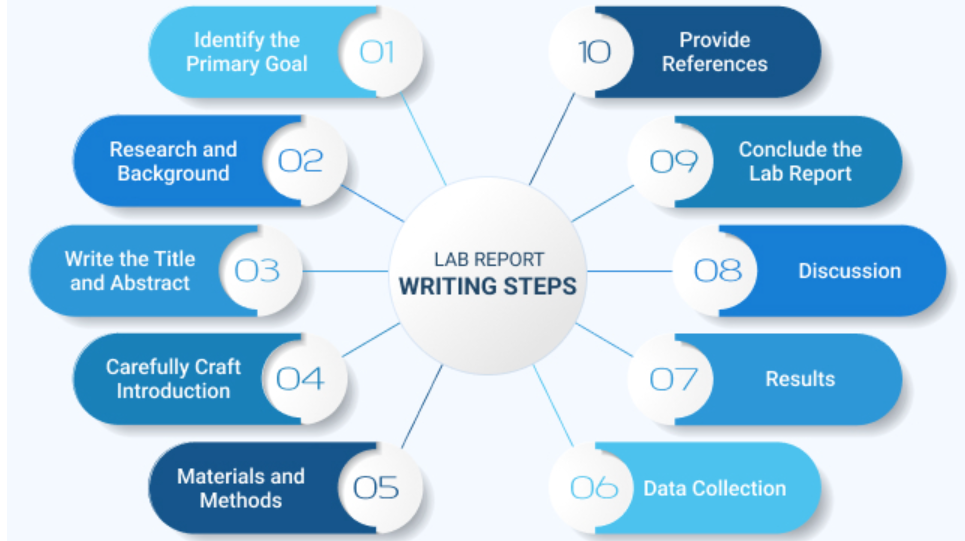
Table of Contents
The pursuit of nursing excellence is paved with practical application and meticulous documentation. At the heart of this process lies the ability to translate hands-on experiences into clear, comprehensive reports. The nursing lab report is not merely a record of an experiment or procedure; it’s a crucial learning tool that demonstrates a nurse’s understanding, critical thinking, and ability to accurately communicate findings. An authentic nursing lab report goes beyond simply reciting steps; it reveals the ‘why’ behind the ‘what,’ showcasing a deep engagement with the subject matter.
This article will guide you through the key components and considerations involved in crafting a truly impactful nursing lab report.
Understanding the Purpose of a Nursing Lab Report
Before diving into the mechanics of nursing lab report writing, it’s vital to understand its purpose. These reports serve multiple functions. First, they document the procedure performed, the rationale behind it, and the observations made during the process. This documentation is essential for tracking progress, identifying trends, and ensuring replicability, which is crucial in a field reliant on evidence-based practice. Second, nursing lab reports help develop critical thinking skills.
By analyzing results, considering potential errors, and reflecting on the overall learning experience, students hone their ability to assess, evaluate, and improve patient care protocols. Finally, the nursing lab report provides an opportunity for students to practice communicating scientific information clearly and concisely, a skill paramount in the collaborative nature of healthcare. Effectively, a well-written nursing lab report is a testament to your understanding and professional preparedness.
Key Components of an Authentic Nursing Lab Report
While the specific format may vary slightly depending on your institution’s guidelines, most nursing lab reports will include the following essential sections:
- Title: The title should be concise, informative, and accurately reflect the experiment or procedure conducted. Avoid vague titles, and aim for specificity (e.g., “Effectiveness of Different Hand Hygiene Techniques in Reducing Bacterial Growth”).
- Introduction: This section sets the stage for the report. Begin by providing relevant background information on the topic. Why is this procedure important in nursing practice? What are the key concepts involved? Include a clear statement of the purpose or aim of the lab activity, often formatted as a specific research question or hypothesis. Briefly explain how the experiment helps achieve this objective. This part also hints at why this activity was chosen, showing your understanding of its clinical significance.
- Materials and Methods: This section meticulously details what you did. It is crucial for ensuring that the experiment is replicable. List all materials used (e.g., equipment, solutions, specific patient simulators, etc.). Describe the steps involved in the procedure in a clear, chronological, and precise manner. Avoid using personal pronouns (I, we); instead, use passive voice (e.g., “The solution was added…” rather than “I added the solution”). Include any relevant controls or adjustments made during the process.
- Results: This section presents the raw data collected during the experiment or procedure. Results can take various forms such as charts, tables, graphs, or descriptive summaries of observations. Be objective and report exactly what you found, even if it contradicts expectations. Avoid drawing conclusions or offering explanations here. Label all tables and figures clearly with titles and axis labels (if applicable). Do not manipulate the data – present them accurately and honestly.
- Discussion: This is where your analytical skills come into play. Interpret your findings by relating them back to the purpose outlined in the introduction. Explain any patterns or trends you observed, highlighting statistically significant results. Compare your findings with existing scientific literature or established nursing protocols, referencing sources as appropriate. Critically evaluate your method and discuss any limitations or potential sources of error. Address the validity of your conclusions based on the data you obtained. This is the heart of your nursing lab report. It should show you’ve understood the ‘why’ and not just the ‘what’.
- Conclusion: Summarize your main findings and the overall learning achieved from the lab activity. Briefly restate your answer to the research question from the introduction. Do not introduce new information in the conclusion. Focus on the key take-aways and their relevance to your nursing practice. This is the final point you are making regarding the experiment and its importance.
- References: List all sources you cited throughout your nursing lab report, adhering to a specified citation style (e.g., APA, MLA). This demonstrates the academic integrity of your work and gives credit to other authors.

Authenticity in Nursing Lab Report Writing
Beyond following the structural guidelines, achieving authenticity in nursing lab report writing requires a commitment to honest reporting, critical reflection, and a genuine engagement with the learning process. Here are some key areas to focus on:
- Accuracy and Precision: Ensure all data is recorded and presented accurately, reflecting the actual results of the procedure. Do not try to make the results “fit” preconceived notions or expected outcomes. Accuracy extends beyond numerical data to the detailed description of processes, observations, and measurements.
- Objectivity: Maintain an objective tone throughout the report. Separate personal opinions or assumptions from your observations and interpretations of the data. Focus on evidence-based analysis rather than anecdotal or subjective accounts.
- Critical Thinking and Reflection: Demonstrate a deep engagement with the material by moving beyond simple descriptions of the procedure. Offer thoughtful interpretations of the results and critically evaluate the process, identifying limitations and potential sources of error. Discuss the implications of your findings for nursing practice.
- Ethical Considerations: Acknowledge any ethical considerations relevant to the experiment. Adherence to ethical standards of research is paramount.
- Proper Citation: Avoid plagiarism by giving credit to other authors through proper referencing. This demonstrates your commitment to academic integrity.
- Clarity and Conciseness: Write in a clear, concise, and professional manner, using appropriate terminology. Avoid jargon or overly complex language. The nursing lab report must be understandable, and language is key to this.
Seeking Help with a Nursing Lab Report
Many students find the process of writing a nursing lab report challenging, and that’s perfectly normal. If you are struggling, there are several resources you can explore. Firstly, your professor or teaching assistants are often willing to provide guidance and support during office hours. Take advantage of this. Additionally, your institution’s writing center or academic support services may offer workshops, writing tutors, and other resources that can help improve your writing skills.
Don’t hesitate to seek out these resources if you need help with a nursing lab report. Online resources and tutorials may also provide insights into how to write a nursing lab report, but always ensure these are from reputable sources. Remember that nursing lab report writing help is readily available; you just need to seek it out.
The Common Mistakes to Avoid in Nursing Lab Report Writing
Nursing education relies heavily on practical skills development, often assessed through laboratory sessions and subsequent report writing. A well-written nursing lab report demonstrates not only a grasp of the procedure itself but also a deeper understanding of the underlying principles and their implications for patient care. However, crafting a clear, concise, and accurate lab report can be challenging. Many nursing students make common mistakes that can impact their grades and, more importantly, their learning. The following are some of these pitfalls and how to avoid them.
Lack of Clarity and Precision
One of the most frequent issues seen in nursing lab report writing is a lack of clarity and precision. Vague language and ambiguous statements can obscure the meaning of the report, making it difficult for the reader to understand the student’s understanding of the procedure. For example, instead of stating, “The patient felt better,” the student should be specific, perhaps writing, “The patient reported a decrease in pain from a 7/10 to a 3/10 using the numerical pain scale after medication administration.” Similarly, when describing the methodology, use specific terms and avoid phrases like “we did the thing.” Instead, detail each step precisely, using the correct anatomical and medical terminology.
Furthermore, students often struggle with defining the purpose of the experiment. A lab report should always start with a clear statement of the objective. What was the purpose of performing this particular procedure or experiment? Clearly outlining this from the beginning provides a framework for the reader to understand the subsequent information. It also showcases that the student knows the ‘why’ behind their actions.
Inadequate Data Analysis and Interpretation
Data is the backbone of any lab report. However, simply presenting data isn’t enough; it requires thoughtful analysis and interpretation. Students often make the mistake of just listing the numbers or observations without providing context or drawing meaningful conclusions. The “Results” section of the report shouldn’t just be a data dump; it should be a narrative that guides the reader through the findings. Were there any unexpected results? If so, what could have caused them? Did the findings align with the expected outcome?
The “Discussion” section provides the opportunity to critically analyze the data, explain the implications of the findings, and connect them back to the original purpose of the experiment. This section is often underdeveloped. Students might simply summarize the results without elaborating on their meaning, thus failing to demonstrate critical thinking and a solid understanding of the underlying concepts. They need to link their results back to theoretical principles learned in the course. This demonstrates an ability to integrate theory and practice.
Incorrect Use of Formatting and Citations
Even if the content of the nursing lab report is excellent, neglecting proper formatting and citation can undermine the entire piece. Nursing education places a high value on academic integrity and professionalism. Neglecting proper citation, whether intentional or unintentional, can be seen as plagiarism. Always adhere to the specified citation style, such as APA or MLA, and consistently cite all sources of information, including textbooks, articles, and online resources.
Additionally, a well-organized lab report is easier to read and understand. It is important to adhere to the prescribed format, including clear headings and subheadings, a logical flow of information, and consistent use of font style and size. Sloppy formatting suggests a lack of attention to detail, which is a critical trait in nursing practice. Use graphs and tables appropriately, labeling all components clearly.
Neglecting the Practical Implications for Nursing
At its core, the purpose of a nursing lab report is not just to demonstrate competence in performing procedures but also to bridge the gap between theory and clinical practice. One of the biggest mistakes students make is not connecting their lab experience to real-world patient care. Every nursing procedure has a purpose in patient assessment, treatment, or overall care. The “Conclusion” section should emphasize these connections. How might the findings of the lab translate into improved nursing practice? What did you learn about patient safety from this experiment? Discussing these practical implications demonstrates a deeper understanding of the role of nursing.
Lack of Revision and Proofreading
Finally, even the most knowledgeable students can make careless errors. Failing to revise and proofread the nursing lab report can result in errors in grammar, spelling, and punctuation, which can distract the reader and affect the report’s overall quality. Always allocate time for reviewing your work. Ask a peer to review your work for clarity and accuracy. Even a fresh pair of eyes can help catch errors you may have missed.
By avoiding these common pitfalls, nursing students can enhance their lab report writing skills, demonstrating a thorough understanding of nursing principles and a commitment to professional practice. Remember, each lab experience is a learning opportunity and these reports should reflect that growth.
Frequently Asked Questions about Nursing Lab Reports
For nursing students, the world of academia often feels like a delicate balancing act between practical skills and theoretical knowledge. One key element of this balance is the nursing lab report. These reports are more than just a summary of an experiment; they are a crucial communication tool that demonstrates your understanding, analytical thinking, and ability to apply learned concepts. It’s understandable that they can seem daunting, so let’s tackle some frequently asked questions.
What exactly is a nursing lab report?
A nursing lab report is a formal written document outlining a practical skill or experiment conducted in a laboratory setting, often simulating real patient care situations. It details the procedure, observations, results, and analysis related to the lab activity. Its purpose is to show you’ve not only performed the procedure correctly but also understood the reasoning behind it.
Why are nursing lab reports so important?
These reports serve several crucial purposes. First, they are a way for instructors to assess your understanding of clinical techniques and procedures. Secondly, they hone your critical thinking skills. Through writing the lab report, you are forced to analyze what you observed, connect it to relevant theory, and draw meaningful conclusions. Finally, they develop your written communication skills, a vital aspect of nursing practice where accurate documentation is paramount. A well-written nursing lab report can show your command of the procedure and the reasoning behind it.

What sections are typically included in a nursing lab report?
While specific requirements may vary, most reports include common sections:
- Title Page: Includes the title of the experiment, your name, date, course name, and instructor’s name.
- Introduction: Briefly explains the purpose of the experiment, relevant background information, and learning objectives.
- Materials and Methods: A detailed description of the equipment and steps followed in the lab procedure.
- Observations/Results: Presents factual data gathered during the experiment, without analysis or interpretation. This can include numerical data, qualitative observations, and diagrams.
- Discussion: The core of the report, where you analyze your observations and results, explain their significance, relate them to course concepts, and identify any potential sources of error.
- Conclusion: A concise summary of your key findings and their implications, emphasizing what you have learned from the lab.
- References (if applicable): Lists any sources used in your report, such as textbooks or scholarly articles.
How should I approach writing a nursing lab report?
Start by fully understanding the lab’s instructions and purpose. Take meticulous notes during the experiment, accurately recording observations. When writing the report, focus on clarity and precision. Use formal, objective language. Be sure to proofread thoroughly for grammatical errors and typos. Think of your nursing lab report as a way of showcasing your learning and understanding to your instructor.
What if I struggle with the writing process?
Don’t hesitate to seek help! Your instructor is a great resource, providing feedback and clarification. Utilize university writing centers for support with structure, grammar, and overall writing style. Peer review sessions can also be incredibly helpful, as they offer alternative perspectives on your work. Remember, lab reports are a key part of your education, and mastering them takes time and practice. The goal is not just to get a good grade, but to build a strong foundation for your future nursing career.
Understanding the purpose and structure of nursing lab report will enable you to approach the task with more confidence and view it as valuable learning opportunity, rather than just another academic hurdle.

The Importance of Consistent Practice
Mastering the art of writing authentic nursing lab reports requires consistent practice and diligent application of these principles. Each report is an opportunity to hone your critical thinking skills, strengthen your understanding of nursing procedures, and improve your ability to communicate effectively. Over time, you will become more proficient in writing a nursing lab report, developing a process that becomes streamlined and natural. As a student, you must engage with each nursing lab report to understand the scientific process.
Remember, the effort you invest in perfecting your nursing lab reports will contribute significantly to your future success as a competent and ethical healthcare professional. The better you become at writing these reports, the better you can apply the knowledge and skills in the real world of nursing. By approaching each nursing lab report as a chance for growth, you will see significant improvements over time.
Following these guidelines will put you on the right track to producing authentic and impactful nursing lab reports, demonstrating not only your technical proficiency but also your dedication to the art and science of nursing. The nursing lab reports you create are a reflection of your dedication to growth in your career.
Get Professional Nursing Lab Report Writing Service
Are you looking for help with writing a nursing lab report? Then, engage our experts at Nursing Papers. We can help you to craft an authentic and high-quality nursing lab report for academic success. Our service covers nursing lab report writing, proofreading, editing and formatting. Besides, we can also assist you with writing nursing essays, research papers and dissertations.







